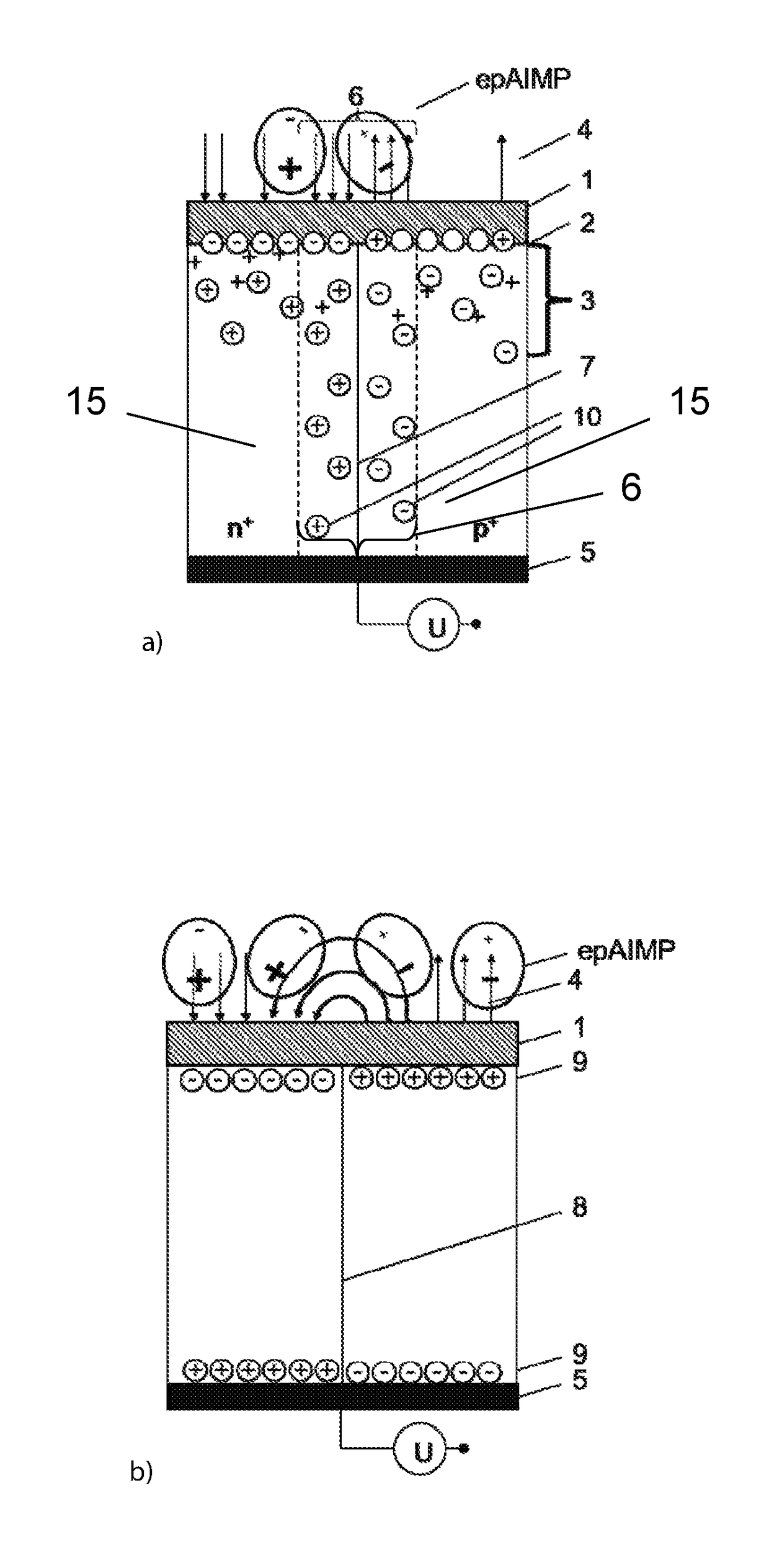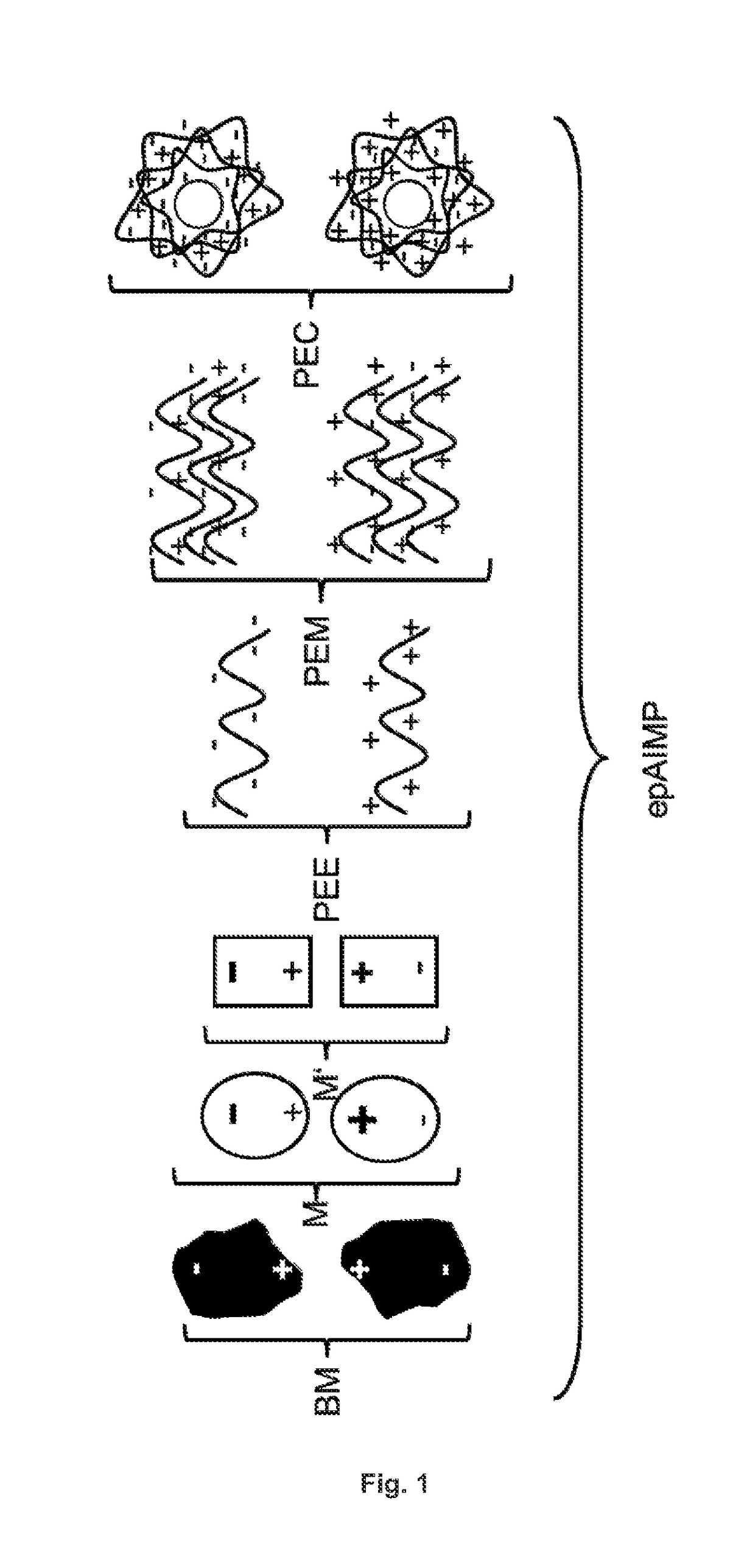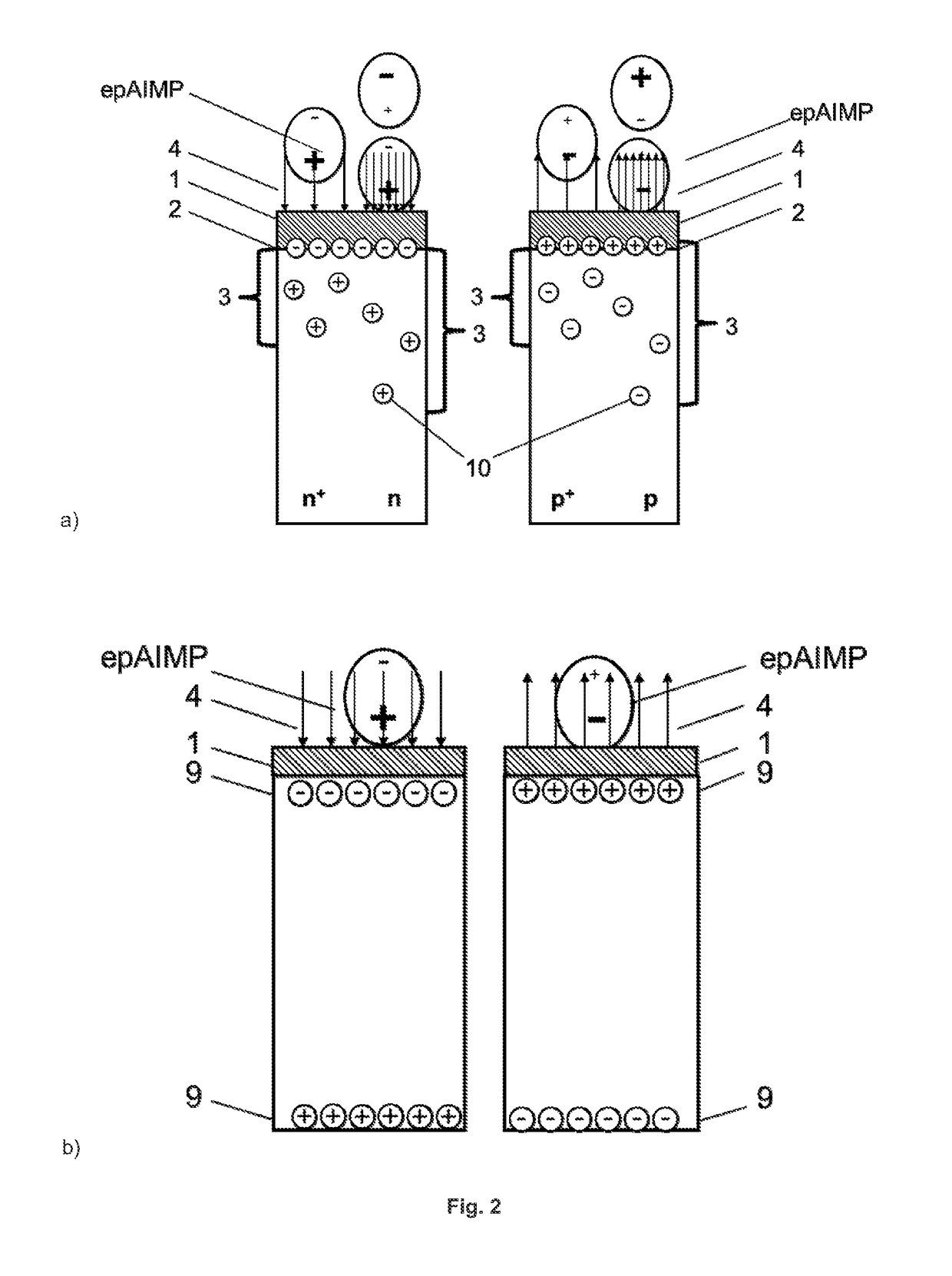Carrier material for electrically polarizable biomaterials, polyelectrolyte materials, atoms, ions and molecules; its manufacture and use
a biomaterial and carrier material technology, applied in the field of carrier materials for electrically polarizable biomaterials, can solve the problems of insufficient classification, high cost, and inability to adapt to ambient changes, and achieve the effect of reusability of the carrier
- Summary
- Abstract
- Description
- Claims
- Application Information
AI Technical Summary
Benefits of technology
Problems solved by technology
Method used
Image
Examples
Embodiment Construction
[0106]Referring to the drawings in particular, a carrier comprising a semiconductor material, for example, silicon, with insulating cover layer 1, wherein the near-surface electrostatic forces are determined by the local doping of the semiconductor with donors or acceptors and by the thickness of the insulating cover layer. It is sufficient, as a rule, if the semiconductor material has a thickness of at least 1 μm and the insulating cover layer has a thickness of about 2 nm to 3 nm. This carrier can be used as a biochip.
[0107]By applying at least one rear-side electrode to the semiconductor material, the biochip can be used as a reusable filter. By changing the voltage applied to the rear-side electrode, it is possible now to consecutively repel or detach different epAIMP added to the carrier and to quantify the detached epAIMPs after the detachment step. The quantification may take place without markers and electrically by means of electron beams (23,24) from an electron source 25 ...
PUM
| Property | Measurement | Unit |
|---|---|---|
| thickness | aaaaa | aaaaa |
| thickness | aaaaa | aaaaa |
| thickness | aaaaa | aaaaa |
Abstract
Description
Claims
Application Information
 Login to View More
Login to View More - R&D
- Intellectual Property
- Life Sciences
- Materials
- Tech Scout
- Unparalleled Data Quality
- Higher Quality Content
- 60% Fewer Hallucinations
Browse by: Latest US Patents, China's latest patents, Technical Efficacy Thesaurus, Application Domain, Technology Topic, Popular Technical Reports.
© 2025 PatSnap. All rights reserved.Legal|Privacy policy|Modern Slavery Act Transparency Statement|Sitemap|About US| Contact US: help@patsnap.com



